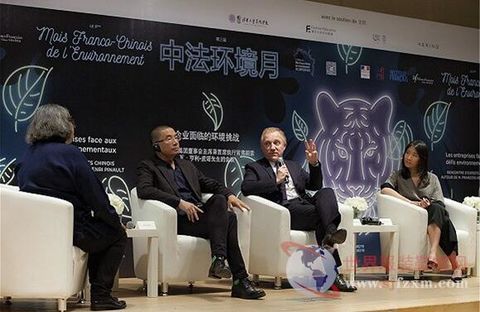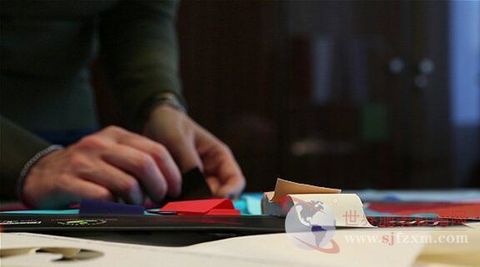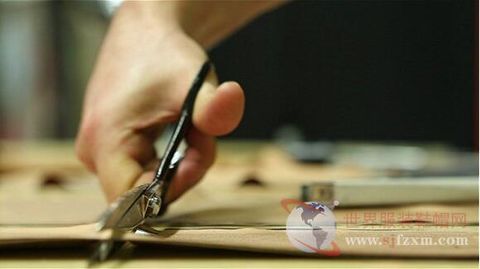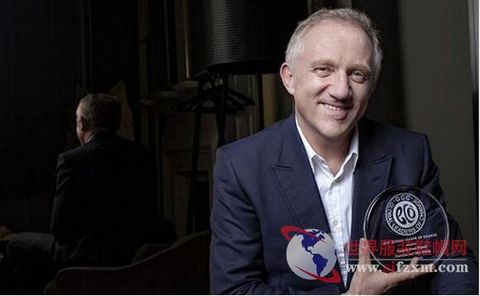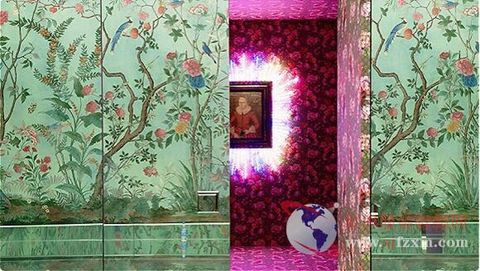After a year, Francois-Henri Pinault came to Tsinghua University with environmental issues. Pino is the chairman and CEO of the luxury group Kerion Group, which owns luxury brands such as Gucci, Stella McCartney and Balenciaga. As part of the third Sino-French Environmental Month, Pino went to Beijing to participate in the discussion of “the environmental challenges facing enterprisesâ€. This is familiar to the second generation of Kaiyun's heads - he has appeared in the Sustainable Forum in recent years as much as fashion festivals or art auctions. In recent years, you may have frequently heard about luxury topics from luxury brands and fast fashion brands such as Zara and H&M, from organic cotton, recycled wool, to energy-saving shops... Between 2000 and 2014, no matter whether it was a luxury brand or a fast fashion, the global fashion production doubled. “Fashion is the second largest source of pollution after oilâ€, and the brand is not ignorant until this sharp point of view is raised. Vogue discussed “sustainable fashion†in 2007. However, the attitudes of various environmental organizations around the world are becoming more and more active. They not only take actions such as parades and sit-ins, but also expose the dark side of fantasy fashion through social media. Put pressure on fashion companies. Some fashion companies have begun to value their environmental image in the public and are willing to make new investments in environmental issues. Although they do not disclose all commercially sensitive information such as access to raw materials and production environments for public supervision, they still tend to correct themselves and master the dominance in the game. Of course, the premise is that we believe that sustainability will ultimately pay off. Kaiyun is one of those fashion companies that are willing to talk about environmental issues. In the Kaiyun Financial Report, carbon emissions also have the same weight as Ping, e-commerce revenue, exchange rate fluctuations, etc., and the sustainable development department at the Kaiyun Group level has expanded from 15 to more than 50 people. Gucci, Bottega Veneta, Saint Laurent, Stella McCartney and other CEOs of all brands of Kaiyun are closely linked to green environmental protection, while the personnel department is required to throw environmental issues to the interviewers. Kaiyun also expands its control over the supply chain, such as the acquisition of raw material plants; and selects partners with the same environmental philosophy. Pino believes that sustainability can be beneficial to all levels of the company, such as employee pride, branding, and even shareholder recognition. However, it is not easy to achieve environmental protection in the fashion industry that is running more and more high speed. The first “Sustainability Report†released by Kaiyun this spring shows that the three indicators – carbon emissions, waste discharge and water consumption have not reached the original level. Set goals. In Beijing, the reporter interviewed Pino and talked about a series of sustainable measures about Kaiyun. Reporter: In 2012, Kaiyun announced its sustainable strategic goals. How long has this plan been prepared before it was launched? Pino: The idea for sustainability starts with PUMA. We started to promote it after seeing the first “Environmental Profit and Loss Statement†(E P&L) in the fashion industry in 2010. Without natural resources, it is difficult to become a modern business. From water, electricity, to cotton, rare animal skins, the fashion industry, which relies heavily on raw materials, has deteriorated the environment and is regarded as the second largest source of pollution after oil. Therefore, it is imperative to implement a sustainable strategy at the company level. I believe that business is the culprit of environmental degradation, but it will also be the solution. Reporter: The analysis report published by Kaiyun, “Environmental Profit and Loss Statement†is a set of methods for quantifying natural capital. Who is the lead? Pino: It is a collaboration with the accounting firm PricewaterhouseCoopers, which quantifies the Group's environmental impact. Simply put, if you can't measure it, you can't manage it. The Environmental Profit and Loss Statement contains six major measures: greenhouse gas effects, air pollution, water pollution, water waste, sewage treatment, and changes to ecosystem services. These are places where we can reduce environmental damage through artificial measures such as raw material innovation, technology and procurement testing in existing production processes. Reporter: Kaiyun released the first "Sustainability Report" this year, showing that indicators such as carbon emissions, waste discharge, and water consumption are not up to standard. Is this result in your expectations? Was the goal set at the beginning too idealistic? Pino: Indeed, the goal we set at the beginning (2012) seems to be bold and fearless in the industry. The Sustainability Report, released in May this year, reveals the efforts of the Kaiyun Group to achieve its goals and the challenges it still faces. We acknowledge that there is still a lot of work left to complete. Some goals require changes throughout the supply chain system, such as agriculture and mining. At this time, the influence of a single group is limited. To reduce carbon emissions, waste emissions, and water consumption by 25%, not only does the company need to make adjustments in its operations, but we also need to innovate the supply chain, change the production system of raw materials, and drive suppliers to act together. We will announce the next phase of our sustainability strategy by the end of 2016, including new sustainability goals. Reporter: You said more than once, "In fact, 93% of our ecological footprint is outside the boundaries of Kaiyun, and we can trace back to the supply chain. If we want to improve our ecological footprint, we must work together with our partners." What coping strategies did Kaiyun come up with? Pino: When we are in a time of resource shortage, we have to reflect on the status quo – where does the raw material come from? Does the supplier provide a proper working environment? How to minimize the environmental damage while producing fabrics? Is the measure effective? We are now trying to find breakthroughs in the supply chain, such as developing new procurement models to reduce environmental damage, but the difficulty lies in ensuring product quality. Sometimes we have found some kind of response, but it is worthwhile to discuss whether it is economically viable as a large group such as Kaiyun. People will tell you, “Everyone knows how to be sustainable, at the cost of 20%-25%.†But our team doesn't always find the answer. When it comes to technology-based problems, we need to find foreign aid. I believe that working with the industry and opening up the breakthroughs that we have achieved in terms of sustainability will have a better effect. I also believe that education can bring about fundamental changes. For example, the roundtable forum we held at Tsinghua University last week can provide new ideas for the younger generation of students. Reporter: Virgin founder Richard Branson has greatly appreciated the Environmental Profit and Loss Statement. What is the applicability of this methodology for companies outside the luxury goods industry? Pino: The Environmental Profit and Loss Statement can be seen as a major breakthrough in sustainability, but the family can't do anything, which is why we insist on sharing the methodology. Several companies expressed their willingness to participate, we can't name them, but this evaluation model needs to be adjusted according to the industry and the company. On a personal level, I also joined The B Team, a group of business leaders formed by Richard Branson, one of whose goals is to achieve zero net emissions by 2050, meaning that it will be completely Offset greenhouse gases emitted by their businesses. The organization also lobbied the multinational governments attending COP21 to commit to this ambitious goal. Reporter: Stella McCartney, a subsidiary of Kaiyun, has been receiving environmental audits for the past three years, and recently released the Environmental Profit and Loss Statement. What kind of support does the Group provide to the brand in terms of sustainability? What environmental concepts and methods of Stella McCartney can be applied to the remaining brands of Kaiyun? Pino: In 2013, Stella McCartney's pilot project “Clean by Design†has now been applied by several other brands. According to the Environmental Income Statement, the finishing and dyeing of the fabric has created a huge waste of water and energy. As of now, most of the suppliers – 25 fabric workshops in Novara, Italy – have been certified to save 10%-30% of their resources, and the input costs will pay off in almost three years. Sustainability was originally the Stella McCartney brand gene. The designer who is “vegetarian†advocates sustainable energy and never uses any leather fabric. When we first started doing it, everyone was laughing at it, but to this day, it proves that environmental protection does not have to be at the expense of revenue. Reporter: Stella McCartney is a brand of Kaiyun, the second independent brand of “Policy Profit and Loss Statementâ€. Will other brands keep up with the release of reports? What standards do they need to achieve in terms of environmental protection before they publish independent reports? Pino: Sustainability is one of the core strategies of Kaiyun. The implementation targets all brands under the group. Of course, the Environmental Profit and Loss Statement is also. But as for whether to release, it depends on the decision of each brand. Reporter: From manpower to capital, few luxury companies or groups will make such large-scale investments in sustainability. The return may not be reflected in the profit figures in the short term. What are the long-term and short-term returns that are satisfactory? Pino: Kaiyun's commitment to sustainability is not aimed at improving ROI. We believe it is the key to solving today's global problems such as population growth, resource constraints, and temperature changes. In the long run, sustainable strategies will inevitably bring advantages to enterprises in the market competition. But it is not gambling tomorrow, but a longer future. I believe that our investment in technology will pay off in a few years because they are actually saving costs. China Sic Windows,Infrared Spectroscopy Optics supplier & manufacturer, offer low price, high quality Infrared Radiation Optics,Uv And Ir Windows, etc.Founded in 2014, Bena was co-founded by several experienced engineers who have more than 10 years of optical design, process, production and test. We provide customization service for high precision (rms = 1/100λ, λ=632.8nm), large diameter plane mirror (>500mm) and aspherical lens, as well as professional spherical lens (such as Optical Domes with diameter 280mm), involving different materials including K9, Silicon, Sapphire, SiC, glass ceramics, fused silica, and other various optical glasses, and we can also deal with the nickel-phosphorus alloy surface on different substrates. Sic Windows,Infrared Spectroscopy Optics,Infrared Radiation Optics,Uv And Ir Windows Changchun Bena Optical Products Co., Ltd , https://www.benaoptic.com